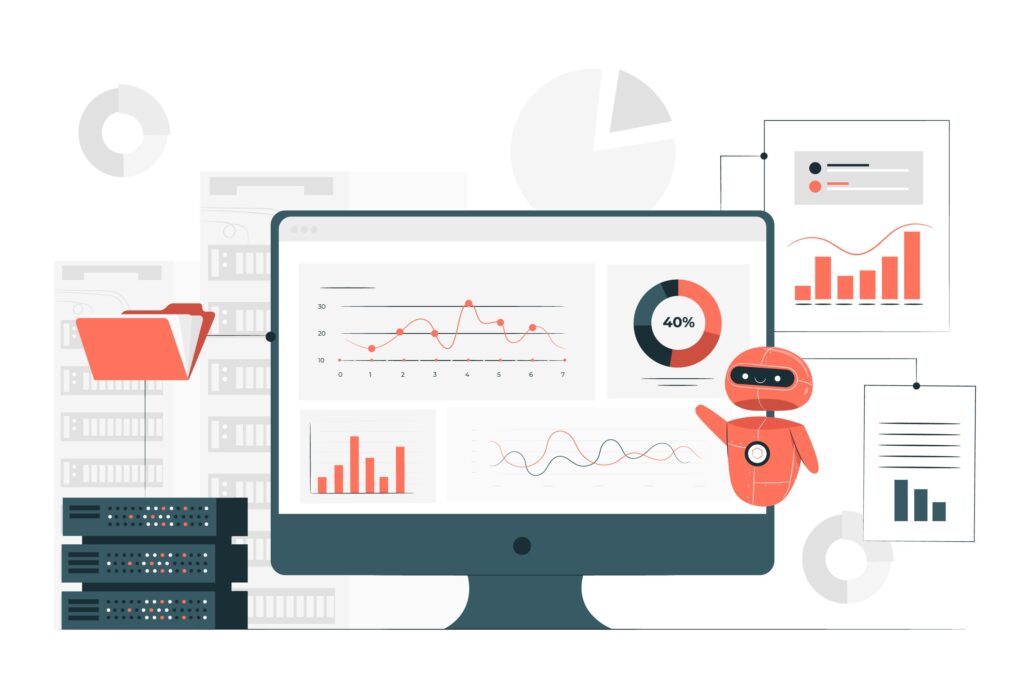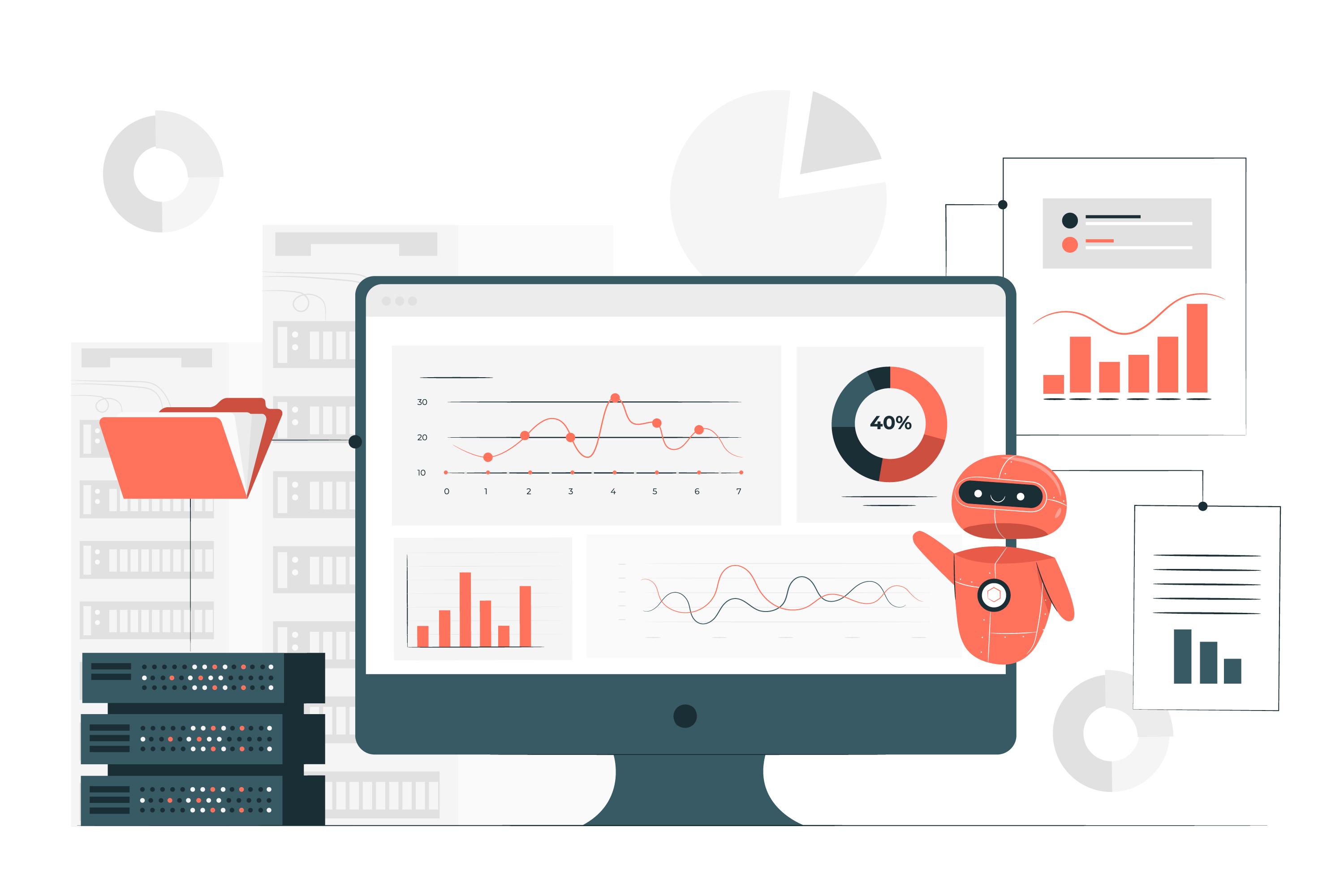Business Intelligence (BI) has become an integral part of modern organizations, providing decision-makers with valuable insights into their business operations. With the advent of big data, Business Intelligence has become increasingly important, providing organizations with the ability to collect, process and analyze vast amounts of data. However, with the increasing availability of data, comes the challenge of managing and making sense of it all. One of the biggest challenges facing organizations today is information overload.
Information overload occurs when individuals receive more information than they can process effectively. In business information, it can result in decision-makers being overwhelmed by the sheer volume of data available, leading to confusion and poor decision-making. It is a major challenge for organizations that rely on Business Intelligence to drive their business decisions, as it can hinder their ability to make informed choices and achieve their goals.
There are several factors that contribute to information overload in business intelligence, including:

Data Explosion: With the advent of digital technologies, organizations have access to vast amounts of data, generated from various sources such as customer interactions, sales transactions, and operational processes. This data explosion has made it challenging for decision-makers to sort through and make sense of the business information to support informed decisions.
Data explosion refers to the rapid increase in the volume and variety of data generated by organizations. This can lead to information overload, as decision-makers are overwhelmed with too much business information and struggle to make sense of it.
For example, organizations may collect data from a variety of sources, including social media, customer feedback, transactional data, and more. This data can be unstructured and difficult to manage, leading to difficulties in extracting the relevant information and insights.
Moreover, the increasing volume of data can make it challenging to store and process it in an efficient manner. This can result in slower decision-making, as decision-makers struggle to access the data they need to make informed decisions.
Data explosion can contribute to information overload by overwhelming decision-makers with too much information and making it difficult to manage and make sense of the data. To address this challenge, organizations should consider implementing data management strategies, such as data warehousing, to store and manage the data effectively. Additionally, organizations should consider implementing BI tools that are designed to handle large volumes of data and make it easier to extract the relevant information and insights.
Inefficient Data Collection: The data collected by organizations may come from various sources such as internal systems, external databases, and customer feedback. However, if the data is not collected in a standardized manner, it becomes challenging to compare and analyze it, leading to information overload.
Inefficient data collection refers to the process by which organizations gather data from various sources but do not standardize the way in which it is collected. This can lead to inconsistencies and errors in the data, making it challenging to compare and analyze.
For example, if an organization collects customer feedback from various sources such as surveys, social media, and email, but does not standardize the format in which the feedback is recorded, it becomes challenging to compare and analyze the data effectively. Some data may be recorded as text, while others may be recorded as numerical values. This can make it difficult to determine patterns and trends in the data and make informed decisions based on it.
Furthermore, if the data is not collected in a timely manner, it may become outdated and irrelevant. For example, if a company collects sales data monthly, but the sales cycle is weekly, the data may not reflect current trends and patterns.
Inefficient data collection can contribute to information overload by making it challenging to compare and analyze the data effectively. To address this challenge, organizations should standardize the way in which data is collected, ensure that data is collected in a timely manner, and establish a data governance framework to ensure the accuracy and consistency of the data.
Complex Data Structures: Complex data structures, such as multi-dimensional databases, can make it difficult for decision-makers to understand and work with the data. This can lead to confusion and the inability to make informed decisions.
Complex data structures refer to the way in which data is organized and stored in a multi-dimensional manner, such as in a multi-dimensional database or a data warehouse. This type of structure can make it challenging for decision-makers to understand and work with the data, leading to information overload.
For example, a multi-dimensional database may have data organized by customer, product, and sales region, with each dimension having multiple levels of hierarchy. This type of structure can make it difficult for decision-makers to extract the relevant information they need to make informed decisions. The complexity of the structure can also lead to confusion and the inability to see the relationships between different data elements.
Moreover, complex data structures can make it difficult to perform ad-hoc analysis, as the data may be organized in a manner that does not support the type of analysis required. This can lead to frustration and a lack of trust in the data, which can in turn result in poor decision-making.
Complex data structures can contribute to information overload by making it challenging for decision-makers to understand and work with the data effectively. To address this challenge, organizations should consider simplifying their data structures and implementing BI tools that are designed to make it easier to extract and analyze the relevant data. They can also invest in data literacy programs to ensure that decision-makers have the necessary skills to work with complex data structures.
Lack of Data Literacy: Many decision-makers may not have the necessary data literacy skills to effectively analyze and interpret the data. This can lead to misinterpretation of information and poor decision-making.
Lack of data literacy refers to the absence of the necessary skills and knowledge required to effectively analyze and interpret data. This can lead to misinterpretation of information and poor decision-making, contributing to information overload.
For example, a decision-maker may not understand the difference between correlation and causation, leading them to make incorrect assumptions based on the data. They may also not be able to interpret charts and graphs correctly, leading to misinterpretation of the data.
Additionally, many decision-makers may not have the necessary technical skills to use BI tools effectively, leading to a lack of trust in the data and the insights it provides. This can result in decision-makers relying on intuition and subjective opinions, rather than data-driven insights, to make decisions.
Lack of data literacy can contribute to information overload by making it challenging for decision-makers to effectively analyze and interpret the data. To address this challenge, organizations should invest in data literacy programs to ensure that decision-makers have the necessary skills and knowledge to effectively work with data. They can also consider implementing BI tools that are designed to be user-friendly and accessible to those without advanced technical skills.
Overreliance on Data: Organizations often rely heavily on data and BI to drive their decisions. However, if the data is not properly understood and analyzed, it can lead to information overload and poor decision-making.
Overreliance on data refers to the excessive trust placed in data and the insights it provides, without considering other factors that may impact the decision-making process. This can lead to suboptimal decision-making and contribute to information overload.
For example, data may not capture the full context of a situation, leading to incorrect conclusions. For instance, customer satisfaction data may indicate that a particular product is not performing well, but this may not take into account other factors such as changes in the market or customer preferences.
Furthermore, data may not always be accurate or up-to-date, leading to poor decision-making. For example, if data is not collected in a timely manner, it may not reflect current trends and patterns, leading to incorrect conclusions.
Overreliance on data can contribute to information overload by leading to suboptimal decision-making. To address this challenge, organizations should ensure that data is used in conjunction with other sources of information and that decision-makers take into account the full context of a situation. Additionally, organizations should invest in data quality initiatives to ensure that the data they use is accurate and up-to-date.
Poor Data Visualization: The way data is presented can also contribute to information overload. If the data is not properly visualized, it can be difficult for decision-makers to understand the insights and trends.
Poor data visualization refers to the way in which data is presented and represented, and how it fails to effectively communicate the insights it provides. This can lead to misinterpretation of information and contribute to information overload.
For example, if data is presented in a confusing or cluttered manner, it can be challenging for decision-makers to understand and make use of the information. Additionally, if the visual representation of the data does not accurately reflect the insights it provides, it can lead to incorrect conclusions and poor decision-making.
Furthermore, poor data visualization can make it challenging to compare data from different sources, leading to a lack of understanding of trends and patterns. For example, if data from different departments is presented in different formats, it can be difficult to compare and make informed decisions based on the information.
Poor data visualization can contribute to information overload by making it challenging for decision-makers to effectively use and understand the data. To address this challenge, organizations should invest in Business Intelligence tools that allow for effective and intuitive data visualization, and ensure that data is presented in a clear and consistent manner. Additionally, organizations should consider investing in data literacy programs to ensure that decision-makers have the necessary skills and knowledge to effectively interpret and use data visualizations.
By understanding these factors, organizations can take proactive measures to address the challenges of information overload, such as implementing a data governance framework, investing in data literacy programs, and implementing BI tools that are designed to simplify the process of data analysis.
To overcome the challenges of information overload, organizations must take a strategic approach to business intelligence. This involves implementing a data governance framework to ensure that data is collected, processed and analyzed in a consistent and standardized manner. Organizations should also invest in data literacy programs to ensure that decision-makers have the necessary skills to effectively analyze and interpret data.
Another important aspect of overcoming information overload is to implement business intelligence tools that are designed to simplify the process of data analysis. These tools should provide decision-makers with easy-to-use interfaces that allow them to access and analyze data in real-time. They should also be able to handle large volumes of data and provide insights that are relevant to the organization’s business goals.
Information overload is a major challenge facing organizations that rely on business intelligence to drive their business decisions. To overcome this challenge, organizations must take a strategic approach to business information, implementing a data governance framework and investing in data literacy programs. Additionally, they must implement business intelligence tools that are designed to simplify the process of data analysis, providing decision-makers with relevant insights in real-time. By addressing the challenges of information overload, organizations can ensure that they are well-equipped to make informed decisions and achieve their business goals.
Simply CRM is a cloud-based Customer Relationship Management (CRM) software solution designed for small and medium-sized businesses. The platform provides a range of features and tools that help businesses manage customer relationships and grow their sales.




